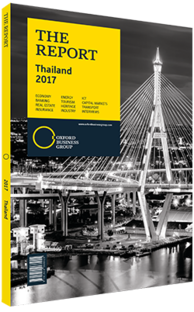Anantaporn Kanjanarat, Minister of Energy: Interview

Interview: Anantaporn Kanjanarat
How are the promotion of efficiency and diversification advancing long-term energy security?
ANANTAPORN KANJANARAT: Today, Thailand is at the forefront of regional economies when it comes to the use of renewable energy sources. In a global context, renewable energy refers to electricity generation through solar, wind and other sources, but in Thailand we take a more holistic approach by diversifying inputs for the production of electricity, heat and fuel. This is necessary because the nation imports over 80% of its oil and more than 50% of its total energy consumption, so we must prepare ourselves in terms of security and sustainability for the future.
There are two ways to pursue these goals: placing an increased emphasis on renewable resources and ensuring energy efficiency. In terms of promoting efficiency, many initiatives are under way. The first step is to further reduce demand to a sustainable level. Automotive taxes have been amended in order to encourage the sale of smaller, more efficient vehicles that produce less carbon dioxide. Additional tax incentives have been put in place for the production of electric vehicles, while heavy investment in mass public transit systems is under way.
More importantly, it is crucial for Thailand to harness its agricultural resources to the fullest. Today, our renewable energy share of final energy consumption is about 14%. We aim to achieve a goal of 30% by 2036, with the contribution of renewable energy coming from heat (19.2%), biofuels (6.7%) and power generation (4.3%). The way Thailand thinks about pursuing renewable energy is quite different from other nations, as agricultural waste represents an opportunity that can be efficiently converted into energy through value-added pellets, ethanol and palm oil. This policy also supports agricultural producers by helping to stabilise prices for crops that can be used for fuel generation.
The same concept is being used for the production of gas. In hundreds of large livestock farms across the country, manure is being turned into biogas and distributed to villages, creating a closed loop that is self-sufficient and shielded from external price shocks and fluctuations. In order to graduate to the next stage of having 30% of final energy consumption originating from renewable sources, a greater level of management in the energy mix will be necessary, and we will have to look into developing fuel crops once all inputs from food products are exhausted. This initiative is well worth the effort and, in the long run, will serve to further reduce imports, decrease waste and ensure energy security for the country.
What level of research and development (R&D) is being allocated for the energy sector?
ANANTAPORN: First, it is important to note that energy is a product used to support other industries, rather than being an end product in and of itself. We are thus a major proponent of bringing and facilitating investment into the nation. This means that we must have an energy policy that can be sustained. Rather than building new plants, R&D is being targeted towards ensuring that we achieve maximum capacity utilisation and eliminate any idle capacity among the nation’s existing power plants. Furthermore, the Energy Conservation Promotion Fund, which generates BT10bn ($281.7m) annually, is being used to support R&D for the purposes of producing more efficient equipment and increasing engagement with renewable energy sources. These are costly initiatives, so emphasis is also being placed on ensuring cost effectiveness as well.
To this end, a network of universities and research institutes in various regions of Thailand is being used to identify areas of the nation’s energy supply chain that can be optimised. Not only will this research benefit the sector and the nation, but it will also ensure that Thailand plays its role in upholding global commitments to promote efficiency and emissions reduction.
You have reached the limit of premium articles you can view for free.
Choose from the options below to purchase print or digital editions of our Reports. You can also purchase a website subscription giving you unlimited access to all of our Reports online for 12 months.
If you have already purchased this Report or have a website subscription, please login to continue.

